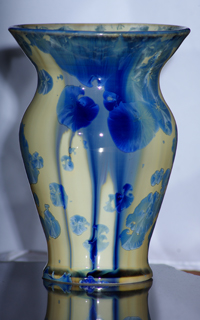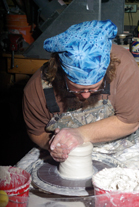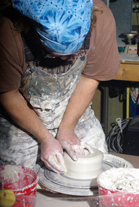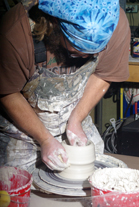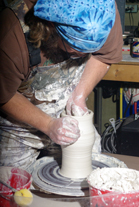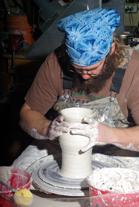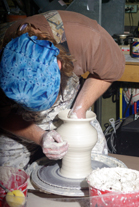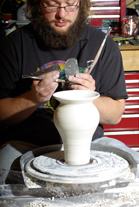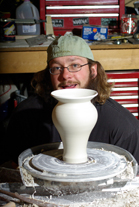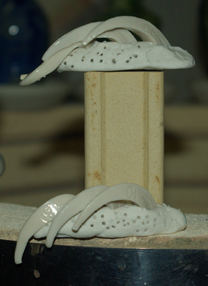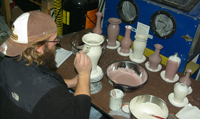www.coloradocrystalline.com
This work is produced and sold at:
Creative Minds Gallery
301 S. 14th Street
Gunnison, CO
81230
(970) 641-3852
mattybeck@gmail.com
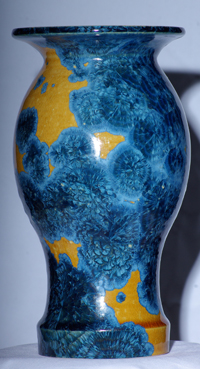
What's Next?
Once the piece is trimmed, the bottom is measured and a catchbowl is made for each one. After the work has dried completely, it is first fired to about 1850 F to get all of the physical moisture out and make the piece less fragile to work with. Once "bisqued," the catch bowls are glued to the bottom of their respective pieces using a "special mixture." Then comes the magic of the crystalline glazing process.
Yes Crystals!
The glaze used is made from scratch with raw materials such as silica and zinc and when done right one can produce zinc-silicate crystals on the surface of the pot. These crystals form spontaneously in the glaze, in random numbers and locations, similar to moss on a rock. The glaze is first fired to about 2300 F to thoroughly melt all of the ingredients. It is then cooled to the crystal-growing temperature (1750-2150 F), where the crystals start growing outward. The longer the glaze is held at that temperature (from 1/2 to 12 hours), the larger the crystals get, until the maximum size for that particular glaze is attained. In order for the crystals to grow, the glaze must be very fluid. It is due to this fluidity that each piece must be attached to a catch bowl prior to each firing. After the firing, the piece is carefully separated from the pedestal, and its bottom is ground flat. Achieving consistent results with this type of glaze is extremely difficult and time consuming. These glazes are seldom produced on a mass scale and each one is very unique - to say the least.
